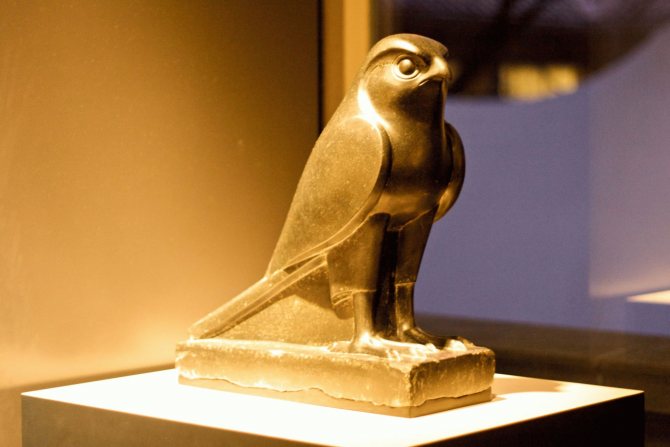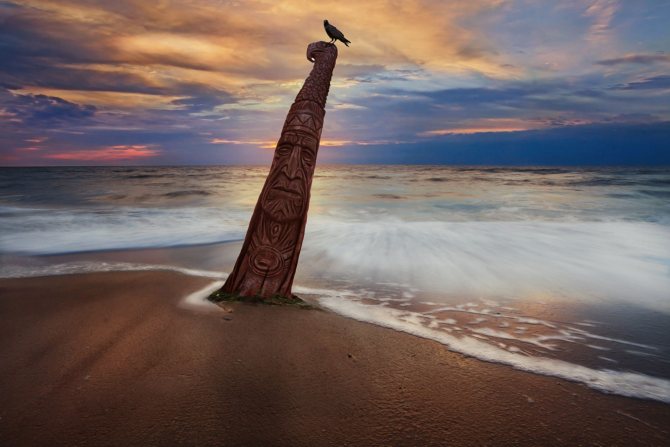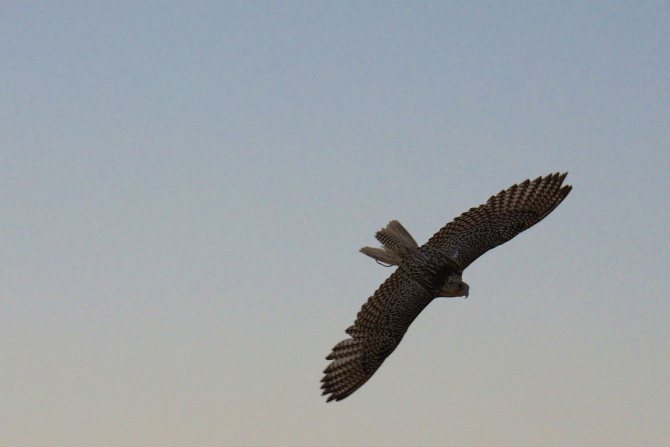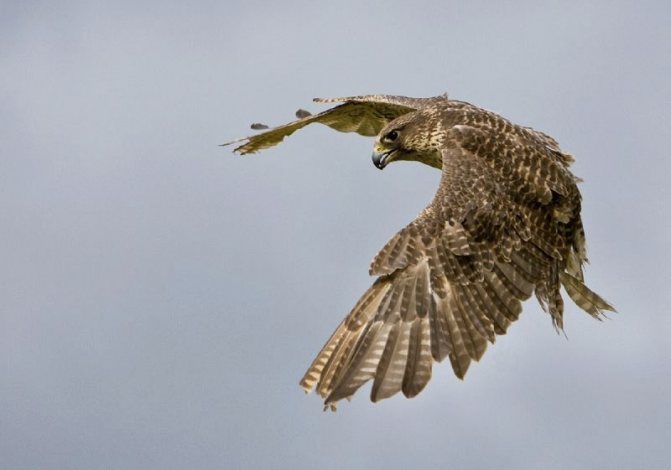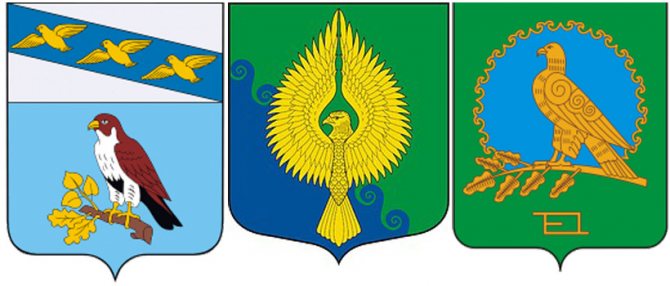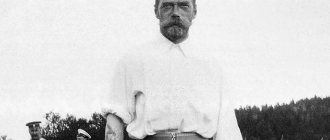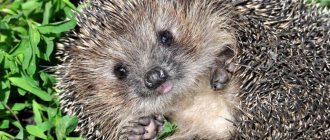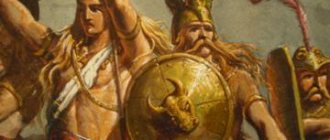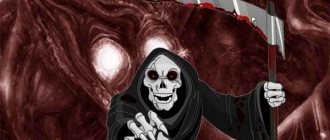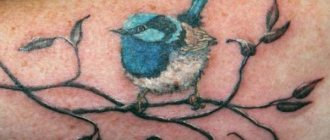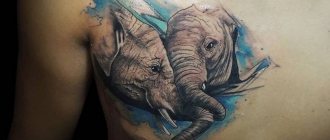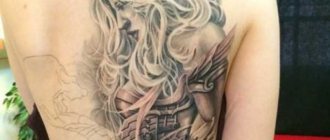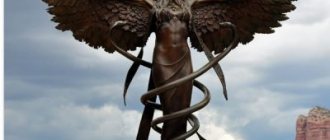| Bird of prey, poised to hunt. Shares with eagle most of its solar symbolism. May swap places with him. Bird of prey, with the same symbolic role as the eagle in the mountains. Even today (primarily in Arab countries) it is used in falconry, and only out of sporting interest, because it allows you to chase small game over great distances. In modern times, a falcon (as well as a hawk) denotes a supporter of a tough political course, as opposed to a dove, which symbolizes the peacekeeping movement. Like the eagle, the solar symbol of victory. A falcon is very similar to a hawk, but with longer wings and a higher flight, so they are almost indistinguishable in iconography and for this reason are considered in this article at the same time. A falcon as a symbol of aggression is much rarer. Currently, the hawk is a symbol of militaristic sentiment. The main meanings are:It is enthusiasm, victory, climbing through all levels. Also denotes freedom, and therefore hope for those who are in fetters, either moral or spiritual. Excellence, a strong desire, spirit, light and freedom. |
Egypt
In Egypt, the falcon was the King of the Birds, the heavenly origin, the bird of the hunt. Embodyed Horus, who appeared either in the form of a falcon or with a falcon's head. Ra Rising Sun, identified with the Horus Horizon could also be with a falcon's head.
In ancient Egypt, the falcon (especially the peregrine falcon - a nomadic falcon) was a symbol of royal power, because "its gaze paralyzes the birds as the face of Pharaoh paralyzes his enemies. Because of its high flight this raptor was an allegorical image of the god Horus, the great god of heaven. Horus was depicted as a falcon or a man with a falcon's head. The sun god Ra (on his head with a solar disk), the god of war Montu (he was depicted with the head of a falcon crowned with two feathers), the god of the dead Sokar (as a mummified falcon) and the god Kherishef with the crowns of Upper and Lower Egypt were also represented in the image of a falcon. The special plumage in the under-eye of the bird further enhances the impression of sight and insight produced by its eyes, so the "all-seeing eye of the goddess Uto", symbolizing foresight (long-range policy) and inviolability (inaccessibility), was revered as a most valuable amulet.
The high flight and joyful fighting prowess of the falcon determined its special place in cultic reverence. Already in the time of the pyramids, the image of the falcon in the sign served as a sign of divinity. As king of the air, the falcon became the sacred bird of the king of the gods Horus and a symbol of divine royalty. This is how the statues of the falcon with a double crown on its head (for example, in the temple of the city of Edfu) should be understood. Gor is the god of Heaven, who with his large wings protects the earth. Along with him there are several other gods associated with the appearance of a falcon: the god of wrestling Mons with the head of a falcon, the sun god Ra with the solar disk and the god of the dead Sokaris. In equation with Horus as the celestial deity, Hathor is called a female falcon. In the time of the pyramids, the celestial journey of the king is depicted as a flight; also the ba-bird (an image of the soul) is usually drawn in the form of a falcon. In the later period, coffins in the form of mummies or the mummies themselves often had falcon masks.
The falcon's eye of Horus was often depicted on amulets:
"The goddess Uto, the all-seeing eye of the goddess, symbolized foresight (inaccessibility) and inaccessibility.
The "all-seeing eye of the goddess Uto," symbolizing foresight and inviolability (inaccessibility), was revered as a most valuable amulet.
In ancient Egypt he was revered as the king of birds; many gods were depicted with the body or head of a falcon, including Ra - in the form of a falcon with a disc instead of the head, symbolizing the rising sun. The god of sky and day Horus was also depicted as a falcon; his falcon's eye was often depicted on amulets, symbolizing his protective powers. A symbol of the human soul, Ba had the body of a falcon and the head of a man.
The meaning of the tattoo for men

Tattoo with the image of a falcon characterizes a man as a strong person. He is brave and has the soul of a warrior. His noble nature is not alien to a sense of justice. Leadership qualities help him in life to conquer unattainable for others peaks.
The guy with the falcon tattoo is very successful and wealthy. He is a good family man and protects the interests of his family. The symbol serves as a talisman for the owner.
Northern tradition.
The Celts had a falcon, like the eagle, was one of the original manifestations. Opposed to the lustful hare, and represents victory over lust.
With the Scandinavians Odin could descend to earth in the form of a falcon. Attribute Frigga and the image of Loki, associated with fire.
With the Norse Germans Odin in the form of a falcon could fly over the earth, but the master of various tricks Loki could also turn into this swift bird.
According to Western tradition, the falcon is an emblem of hunting, associated with the Germanic sky god Vodan and his wife Friga and with the Scandinavian trickster god Loki.
Meaning of tattoos for girls
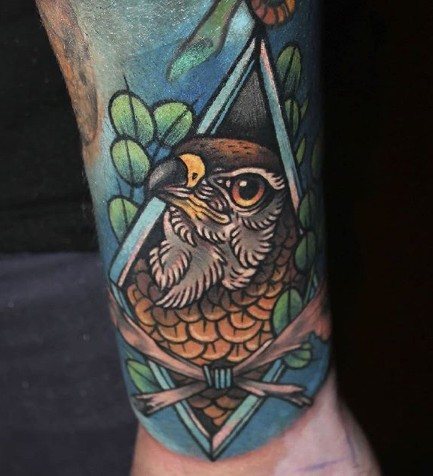

Despite the fact that the falcon is a male sign, tattoos with the bird are nabbed and girls. They choose this symbol solely because of its beauty. But such a tattoo can be found in a determined and independent woman. She has a strong character and wants to succeed in life. She is ambitious and knows her worth.
Christianity
BAVON and JULIAN GOSPITALITY attribute.
In the West, the hunting falcon - an attribute of many saints (eg, the patron saint of hunting St. Hubert); less often, as the chaser of the "always tempting" hare, he was considered a symbol of overcoming sensuality.
In medieval animal books a negative interpretation of the falcon was established. In its lazy flight, they said, it soared over the meat markets to steal offal, an exact copy of man thinking only of his womb. "The falcon is cowardly against the great bird, and so it lays in wait for defenseless chickens to steal them away. Such are also the work of seducers of pampered young people and lead them to vicious morals" (Unterkircher).
Two kinds of falcons are used in religious symbolism: wild and domestic. The wild falcon symbolizes an evil thought or evil deed, while the domestic falcon is a symbol of a holy man and sometimes a pagan convert to the Christian faith. In Renaissance painting, the domestic falcon, serving as a hunting bird, is often present in scenes of festivities and scenes from the life of the nobility. Stories about the Magi often depict it sitting on the arm of the boy accompanying them.
Description of the falcon
This is the main winged bird of the planet. The falcon is capable of moving in the air at speeds of up to 320 kilometers per hour. A sharp and strong hunter, able to see his prey from a kilometer away. The bird's name in Latin sounds like "falco", derived from the word "falx", which means sickle. Indeed, if you look at a falcon in flight, you can detect the resemblance of the wings to a sickle.
Appearance
The falcon has a powerful body with strong and broad wings. It has a broad chest and strong limbs. The beak has an interesting structure: it is short, hook-like with a sharp tooth at the top. It allows breaking the spines of small birds.
Emblematics
A falcon with a cap on its head is a symbol of hope for light and freedom.
A falcon tied to a perch. //If I were free. symbol of a vicious and malignant person, or a powerful adversary, whose power and strength are limited and bound, and whose propensity to commit evil deeds, if he were in the will, would immediately manifest itself to our great detriment. [СЭ-II,таб.45-9,с.298]
The falcon in the cap// In the darkness I await the dawn symbolvosredemption to eternal light "when the cap is removed from us, we will see more clearly and revere the Glory of God. [Emblemata-2; Table 5-6, p.125]
A falcon sitting on a tether. // I am tethered to conquer. The falconer carries him, tying him by the paw, and only when hunting lets him go free. This means that we should, if necessary for a good or great cause, voluntarily give up our freedom and not grumble at it. [СЭ-II,таб.34-11,с.248]
A falcon falling from the sky on a hare. // I fall down of my own free will. symbol means that we do not need to forcibly do what is already natural and pleasant for us. [СЭ-II,таб.18-14,с.179]
A falcon attacking a heron in the air. //My power is greater. symbol of a bloody and cruel tyrant oppressing defenseless people. Pursued by hunger, he prowls in the sky And sees a heron holding its way somewhere. And, thirsty for blood and plotting death, On mighty wings gaining height, Like lightning, he cuts his way through the sky, And in the same instant he is hidden Far away, In pursuit of his feared prey. [СЭ-II,таб.55-1,с.337]
Falcon sitting on a tree. //I'm waiting for an opportunity. The symbol of a vicious man, waiting for an opportunity to commit an evil deed. [СЭ-II,таб.54-9,с.334]
A falcon tied to a perch with bells. // Noise harms me. a symbol that celebrity, or too high a reputation, can greatly harm us and, moreover, offend humble people. (See Fig. II in Table II.) [SE-II,tab.46-7,p.302]
A falcon with a heron in its talons. // I intend to accomplish great deeds. a symbol of a heroic mind, which aspires only to great accomplishments. [СЭ-II,таб.46-8,с.302]
The falcon, allowing the sparrow to slip away from him. // I will not do anything to someone who is lower than me or similar to me. a symbol of an honest and generous man, who despises committing dishonest deeds - the victim of a falcon must be a larger bird. [СЭ-II,таб.18-15,с.179]
A falcon capturing a partridge. // This belongs to my master. a symbol of loyalty, or conscientious performance of assigned duties, without trickery and deceit. [СЭ-II,таб.56-3,с.341]
Falcon and heron. (See Fig.1 in tab.55.) [SE-II,tab.56-14,p.343].
Falcon bird in history, culture and nature




Since ancient times, people have lived side by side with the falcon and associated it with nobility, courage, and bravery. Reflection of this is in the culture and religion of many peoples. From the article you will learn what meaning the bird falcon has in different peoples.
General Characteristics
Falcons are an entire genus of birds in the falcon family. The birds are widespread throughout the world and are also widely known. Their distinctive feature is the sickle-shaped wings, for which they got their name - Falco (from the Latin Falx - "sickle").
The birds have a short, hook-shaped beak, large eyes and a long, rounded tail. Just like other birds of prey, they have a robust stocky build, strong legs and a broad chest.
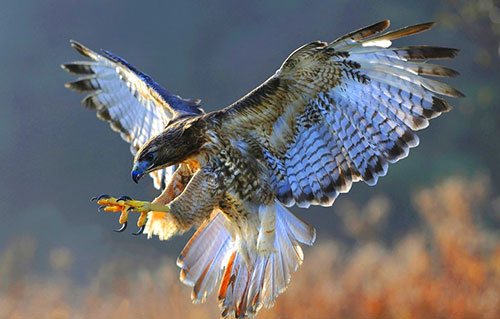

The colors of these birds vary from species to species. For example, the gyrfalcon, which lives in northern latitudes, has almost white coloring, and the peregrine falcon is mostly dark gray, rarely almost black. But in most cases color of these birds is motley and has a brown or gray hue with white flecks.
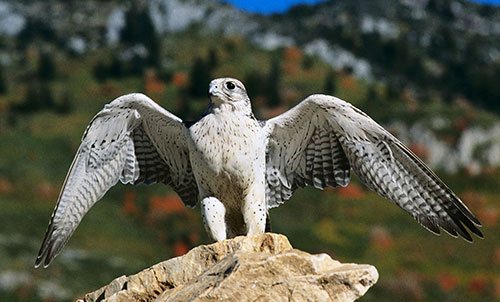

Falcon family includes about 40 species. These are both very small individuals of 35 cm in length and very large up to half a meter in height. They eat large insects, rodents and small mammals.
Falconry
The popularity of this type of hunting is due to the fact that these birds are easy to train, feel comfortable in captivity and are extremely loyal to humans. The first mentions of domesticated birds by humans date back to the 8th century B.C. This information was found in the territory of modern Iraq.
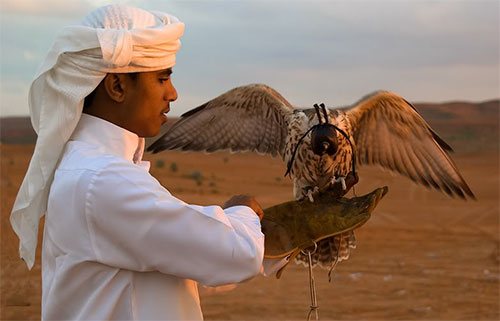

This hunting takes place without a rifle or other weapons. The bird is released in the place where the prey can be. From here on, it does everything on its own - it finds the target immediately and attacks lightning fast. All the hunter has to do is to approach in time and take his prey.
Nowadays, this kind of hunting is popular in Arab countries as a kind of elite entertainment. This bird in the Arab Emirates is the same as a sports car or a luxury yacht. They cost up to half a million dollars.
Cult in ancient Egypt
The falcon is the most important totem symbol in the culture of ancient Egypt. A number of gods of Egyptian mythology could take his form.


First of all, it is the god of the sun and the sky, the patron saint of pharaohs, Horus. He was depicted with the head of a peregrine falcon. God Ra was also depicted as a feathered man with a crown on his head symbolizing the sun. The god of war, Montu, like Horus, had the appearance of a man with the head of this bird.
The feathered man was worshipped as something royal. Was always the patron saint of the pharaohs, and was associated with them.
Veneration among the Slavs
From time immemorial, the best warriors, demonstrating courage, bravery and honor, were called clear falcons. The Slavs have the most positive associations with this bird.
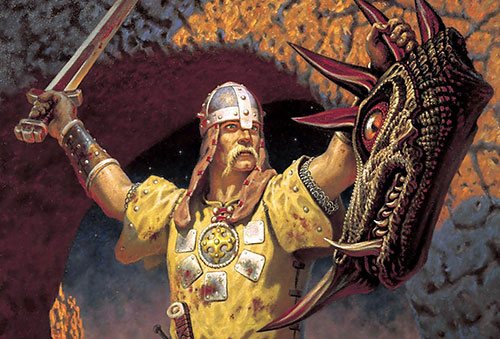

Everything where it was mentioned in Russia had a superlative degree. The most fortunate, brave, dexterous, loyal to the family and the noblest were honored to be compared to her.
In Rus it was the progenitor of the world. It was from his egg, according to legend, the world was born, and the plumage of the bird illuminated the eternal darkness.
Western Slavs call the baloban, a subspecies of the falcon, "rarog." It is noteworthy that a character with this name is widespread in Slavic mythology and is depicted as a falcon. It is the fiery spirit of the hearth.
The image of this bird was also widely used in Russian fairy tales. The Falcon Falcon was an image of the ideal husband, the Tsarevich, who flew at night to his beloved.


Finist the Bright Falcon
With the popularization of falconry in Russia, the birds were highly prized and worth a lot of money.
Falcon in Oriental and Asian culture
The tradition of falconry has survived to this day in many eastern countries. But in the past it was not a pastime. Birds were hunted in order to survive in the harsh conditions of deserts or steppes.
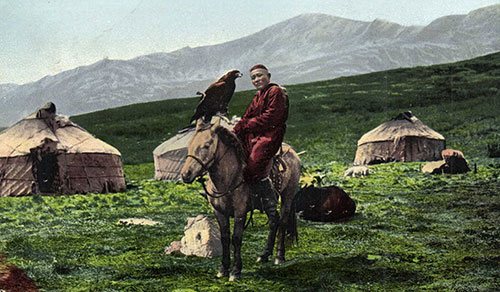

In Turkic culture it is believed that a falcon is the soul of its owner and to sell it, and even more so to lose it, is a great misfortune. This situation was widely used in folk mythology, where the hero could cope with evil only after reuniting with his bird. According to legend, Khan Tokhtamysh was invincible thanks to a pair of falcons.
The Falcon in European Culture
In Scandinavian myths Odin and Loki were transformed into a falcon and could fly above the ground. This bird is a permanent attribute of some of the saints and is always depicted with them on frescoes and icons.
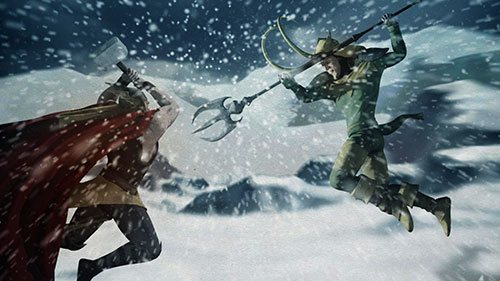

These feathered birds are mentioned in many legends and epic poems, such as the "Saga of the Nibelungs", the "Song of Sigurd" and others. Falcons were very popular with royalty. It was forbidden to kill them in many European countries under penalty of death.
As you can see, falcons are loved and respected all over the world. At all times, people associated them with courage, bravery, quick reaction, and loyalty. Even the ancient Incas raised these birds to the rank of the spirit, a symbol of the sun. They are depicted on coats of arms, coins, and postage stamps. Almost everywhere in the world, the killing of this feathered bird was punishable by death.
Some species of falcons, such as saker falcon, peregrine falcon and kestrel are listed in the Red Book.
That's all. If you want to add anything, write in the comments.
Share the article with your friends and sign up for site updates.
Falcon
A bird of prey trained to hunt.
Shares much of its solar symbolism with the eagle. Can swap places with him.
Bird of prey, with the same symbolic role as the eagle in mountainous areas. Even today (primarily in Arab countries) it is used in falconry, and only out of sporting interest, because it makes it possible to chase small game over great distances.
In modern times, a falcon (as well as a hawk) denotes a supporter of a tough political course, as opposed to a dove, which symbolizes the peacekeeping movement.
Like the eagle, the solar symbol of victory. The falcon is very similar to the hawk, but with longer wings and a high flight, so they are almost indistinguishable in iconography and for this reason are considered in this article at the same time.
The falcon as a symbol of aggression is much rarer.
At present the hawk is a symbol of militaristic sentiment.
It is enthusiasm, victory, climbing through all levels. It also denotes freedom, and hence hope for those who are in fetters, moral or spiritual. Excellence, strong desire, spirit, light and freedom.
Systematics
Peregrine Falcon is a member of the falcon family; its closest relatives are the gyrfalcon (Falco rusticolus), saker falcon (Falco cherrug), laggar (Falco jugger), Mediterranean (Falco biarmicus) and Mexican (Falco mexicanus),[17][18] which are often grouped into one.
It is believed that the evolutionary divergence of all these birds from other members of the genus began in the late Miocene or early Pliocene, about 5-8 million years ago. Since the group includes both Old World and New World species, the divergence is thought to have most likely centered in western Eurasia or Africa.
The relationship of this group to other falcons is still not fully elucidated; one of the factors complicating scientific research is widespread hybridization between different species.
[17][18] For example, in aviary breeding, crossing the Peregrine Falcon and the Mediterranean Falcon is popular - the common offspring have the characteristics of both species: the hunting prowess of the former and the endurance of the latter.
